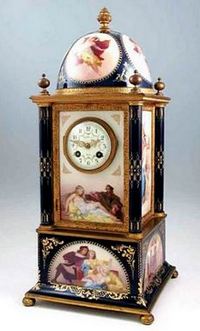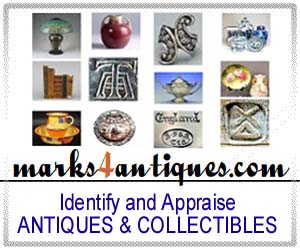ROYAL VIENNA PORCELAIN AND THE BEEHIVE MARK;
Identifying and Researching Based on Historical Facts
See examples from our Pricing Guides

Discovering Royal Vienna porcelain pieces is a delight for collectors and connoisseurs of fine porcelain. However, it can be challenging to identify the authenticity of these pieces, especially when the "beehive" mark accompanies the term Royal Vienna. In this article, we will explore the history and meaning of the Royal Vienna porcelain and the beehive mark, and guide you on how to differentiate between original and fake pieces.
Understanding the "Beehive Mark" and Defining "Royal Vienna"
The term Royal Vienna and the "beehive" mark are frequently used on fine porcelain and china pieces, mostly on decorative items. However, there never was a company or factory called Royal Vienna. Instead, many collectors use this term to refer to the Imperial & Royal Porcelain Manufactory in Vienna, Austria. This manufactory operated between 1718 and 1864, under the mentorship and financing of the Hapsburg Royal Family. While Royal Vienna was not the factory's official name, the manufactory was responsible for creating stunning porcelain artwork and ceramic masterpieces. Their famous "bindenschild" mark, also known as the "beehive" mark in English-speaking countries, is the second most copied or imitated porcelain mark in history after Meissen's crossed swords.

Some collectors refer to pieces made by the original Imperial & Royal Porcelain Manufactory as "Royal Vienna," while others use this term to describe the style of certain items, not necessarily their origin or maker. For example, decorative plates that have a "beehive" mark and were made between the 1880s and 1940s are often called "Royal Vienna Plates." However, when someone proclaims a piece to be "Royal Vienna," the obvious question should be, "Do you mean from the Imperial & Royal factory period or made later in that style?"
If it is an original Imperial & Royal Manufactory piece, the authentic beehive mark is never symmetrical and always underglaze in blue or impressed. However, many copies and imitations of the beehive mark exist, which can make identifying genuine pieces challenging. Not only was this mark forged almost immediately upon the original factory being auctioned off by the King due to financial difficulties, but it is also found to be used in several variations even to this day, sometimes by trading companies or importers.
Royal Vienna Artisans and the Widespread Use of the Beehive Mark
It's worth noting that many pieces that used a copy or imitation beehive mark are not necessarily of poor quality. In fact, the vast majority of later Royal Vienna pieces, especially those made between the 1870s and 1950s, are of high workmanship and usually command high prices. Most were made at reputable studios and by accomplished artisans, usually in the Bohemian region of Europe, but also in England, France, Italy, and elsewhere. Many of these imitation beehive marks have been well documented and attributed to various makers by ceramics historians in several books and websites.

Some notable artists and studios or companies from that period include Ackermann & Fritz, Augarten Vienna Porcelain, C.M. Hutschenreuther, Carl Knoll, Carl Thieme, Erdmann Schlegelmilch (E.S. Germany), Josef Kawan, Kolmar Porcelain, Josef Riedl, and many others.
Identifying Beehive Marks
While most beehive mark copies are fairly easy to tell apart, each specific artisan or studio used a different variation. Although most marks applied between the 1870s and 1930s were done by hand, there are usually one or two details that help in attributing them accurately. Some of the more recent uses of the beehive mark are applied by stamp, usually in an industrial manner. For example, ARNART IMPORTS, which was in business between 1957 and 2001, imported fine porcelain and china from Japan

Another way to tell if a piece is genuine Royal Vienna or a later copy is by examining the style and quality of the artwork. Original pieces from the Imperial & Royal Porcelain Manufactory were created by highly skilled artisans and often feature intricate designs and details. Later copies may have a similar style but are generally not of the same caliber.
Conclusion
If you are a collector of fine porcelain and come across a piece with the beehive mark or the term "Royal Vienna," it is important to do your research before making a purchase. Understanding the history and various meanings of these terms can help you determine the authenticity and value of the piece. Additionally, examining the mark, style, and quality of the artwork can further confirm whether the piece is a genuine original or a later copy. By taking the time to do your due diligence, you can ensure that your collection only contains the finest and most valuable pieces.
.Unlock the true value
of your collection with our comprehensive research guides from identifying makers' marks to appraising all kinds of
antiques and collectibles.
Our up-to-date information will give you an accurate understanding of your items' worth. Don't miss out on this
valuable resource - visit our research tools today!
Search our price guide for your
own treasures





